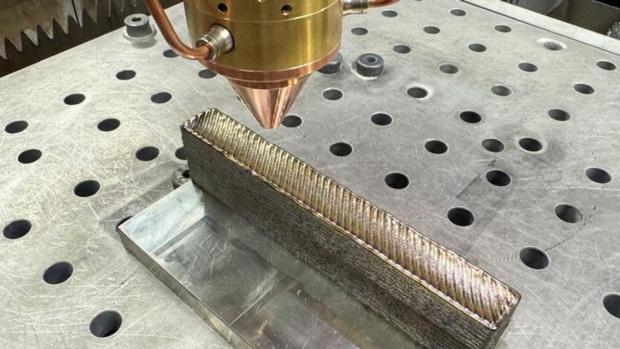
Breaking News
 Alternative Ways to Buy Farmland
Alternative Ways to Buy Farmland
 LED lights are DEVASTATING our bodies, here's why | Redacted w Clayton Morris
LED lights are DEVASTATING our bodies, here's why | Redacted w Clayton Morris
 How My Youtube Channel Makes Money
How My Youtube Channel Makes Money
Top Tech News
 Travel gadget promises to dry and iron your clothes – totally hands-free
Travel gadget promises to dry and iron your clothes – totally hands-free
 Perfect Aircrete, Kitchen Ingredients.
Perfect Aircrete, Kitchen Ingredients.
 Futuristic pixel-raising display lets you feel what's onscreen
Futuristic pixel-raising display lets you feel what's onscreen
 Cutting-Edge Facility Generates Pure Water and Hydrogen Fuel from Seawater for Mere Pennies
Cutting-Edge Facility Generates Pure Water and Hydrogen Fuel from Seawater for Mere Pennies
 This tiny dev board is packed with features for ambitious makers
This tiny dev board is packed with features for ambitious makers
 Scientists Discover Gel to Regrow Tooth Enamel
Scientists Discover Gel to Regrow Tooth Enamel
 Vitamin C and Dandelion Root Killing Cancer Cells -- as Former CDC Director Calls for COVID-19...
Vitamin C and Dandelion Root Killing Cancer Cells -- as Former CDC Director Calls for COVID-19...
 Galactic Brain: US firm plans space-based data centers, power grid to challenge China
Galactic Brain: US firm plans space-based data centers, power grid to challenge China
 A microbial cleanup for glyphosate just earned a patent. Here's why that matters
A microbial cleanup for glyphosate just earned a patent. Here's why that matters
 Japan Breaks Internet Speed Record with 5 Million Times Faster Data Transfer
Japan Breaks Internet Speed Record with 5 Million Times Faster Data Transfer
New 3D-printed titanium alloy is stronger and cheaper than ever before

Because they have exceptional strength-to-weight ratios, corrosion resistance, and biocompatibility, titanium alloys are used to make aircraft frames, jet engine parts, hip and knee replacements, dental implants, ship hulls, and golf clubs.
Ryan Brooke, an additive manufacturing researcher at Australia's RMIT University, believes we can do way better. "3D printing allows faster, less wasteful and more tailorable production yet we're still relying on legacy alloys like Ti-6Al-4V that doesn't allow full capitalization of this potential," he says. "It's like we've created an airplane and are still just driving it around the streets."
Ti-6Al-4V is also known as Titanium alloy 6-4 or grade 5 titanium, and is a combination of aluminum and vanadium. It's strong, rigid, and highly fatigue resistant. However, 3D-printed Ti-6Al-4V has a propensity for columnar grains, which means that parts made from this material can be strong in one direction but weak or inconsistent in others – and therefore may need alloying with other elements to correct this.
To be fair, Brooke is putting his money where his mouth is. He's authored a paper that appeared in Nature this month on a new approach to finding a reliable way to predict the grain structure of metals made using additive manufacturing, and thereby guide the design of new high-performance alloys we can 3D print.
The researchers' approach, which has been in the works for the last three years, evaluated three key parameters in predicting the grain structure of alloys to determine whether an additive manufacturing recipe would yield a good alloy:
Non-equilibrium solidification range(ΔTs): the temperature range over which the metal solidifies under non-equilibrium conditions.
Growth restriction factor (Q): the initial rate at which constitutional supercooling develops at the very beginning of solidification.
Constitutional supercooling parameter (P): the overall potential for new grains to nucleate and grow throughout the solidification process, rather than just at the very beginning.
Through this work, the team experimentally verified that P is the most reliable parameter for guiding the selection of alloying elements in 3D-printed alloys to achieve desired grain structures for strength and durability.

 No Excuses: Throw A Party!
No Excuses: Throw A Party!


